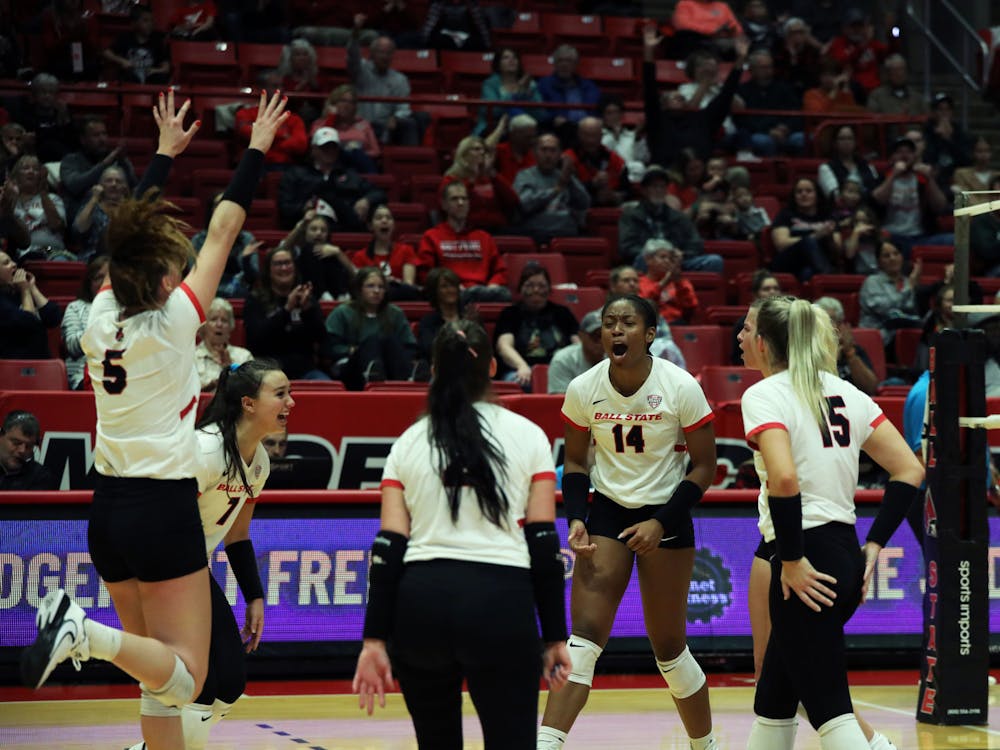For critics of collegiate referees calling less fouls to the home team, there now may be proof it really does happen.
Ball State University Assistant Professor of Sport Administration David Pierce, along with Indiana University Kelley School of Business Professor Kyle Anderson, completed a study that shows referees do have a home team bias when calling fouls over the course of the game.
"I've been officiating basketball for the past eight or nine years now and [Anderson] played Division III college basketball and we had a class together at IU awhile ago," Pierce said. "We both had the ideas of how referees make decisions so we put our skills together and created the idea for the study."
The focus of the study was to examine the foul differential in collegiate basketball games. Pierce and Anderson reviewed only the first half of 365 NCAA basketball games from the 2004-2005 season. They only covered conference games between the Atlantic Coast, Big East and Big Ten conferences along with all 64 games in the NCAA Tournament.
"We mainly focused on, ‘Do referees try to keep the foul count even over the course of the game?'" Pierce said. "Basically what we found was as the foul differential increased, the probability the next foul would be called on the team with fewer fouls also increased."
In their study, they argue there are two different ways to officiate a game: objectively and fairly. An objective referee calls fouls as they see them, while a fair referee tries to make the foul count even.
"An objective referee is going to call what he sees," Pierce said. "If one team makes 20 fouls and the other only makes two, then at the end of the half there will be a 20-to-2 foul count."
Pierce argues that in reality, referees want to be seen as fair with foul calling by the players, coaches, fans and media. The result of being pressured into being seen as fair results in an even foul count by the end of the first half.
One of the games they reviewed was the 2005 national semifinal game between the University of Louisville and the University of Illinois. The Fighting Illini, known to be aggressive on defense, had the first seven fouls of the game called against them. Five of the next six fouls were called on the Cardinals. By the end of the game, which Illinois won 72-57, Louisville was called for 13 fouls while Illinois was called for 12.
"We also looked at who was at home and who was on the road," Pierce said. "We mostly found that the home team had a one foul advantage each half, so about a 6 to 7 percent advantage, which is about one foul shot over one half. When you get to the double bonus in the second half that's a four foul shot advantage to the home team."
Pierce said that the patterns in the foul differential were similar whether the game was a 20 point-rout or a two-point game. He also said the patterns were similar deeper into the NCAA tournament and for the national title game that season between the University of North Carolina and the University of Illinois.
Since Pierce and Anderson only looked at the first half of games, Pierce does not believe that the fouling patterns played a deciding factor in who won each game. They believe that the patterns show that the referees award the more aggressive team in each game.
Their study caught the attention of the NCAA, which reviewed the study. Pierce said he does not know what the NCAA will do with the study.
Pierce feels the foul patterns are a natural part of the game because of human nature. He says if there were to be any solution, it would be to increase the penalty for a foul.
"We have left the study open for interpretation," Pierce said. "The blogs are saying this is proof the refs are crooked. That's not what we are trying to prove. We aren't saying they are gambling or intentionally favoring teams. Our argument is that they feel pressured to be perceived as fair and the more aggressive teams will have the advantage."




